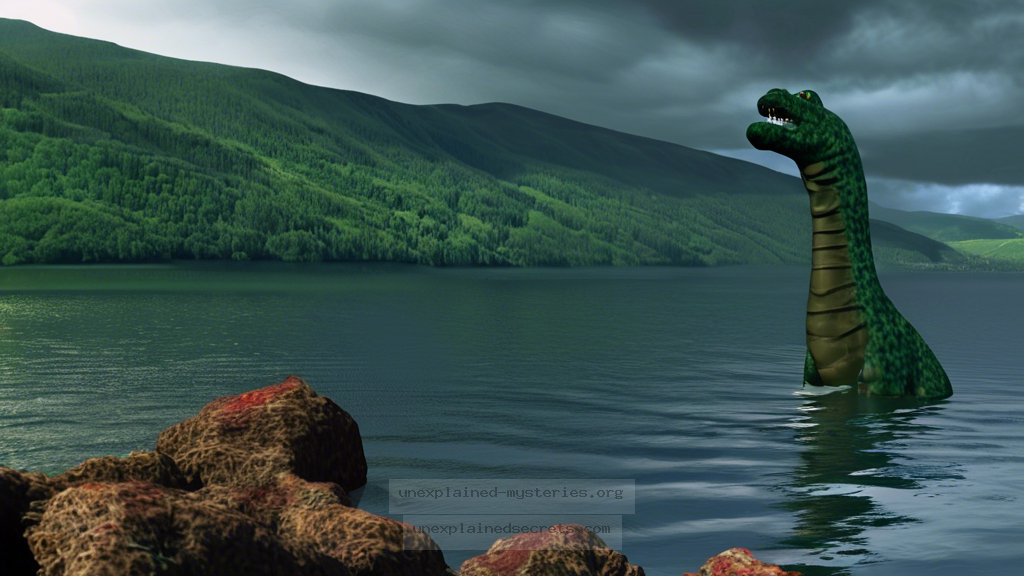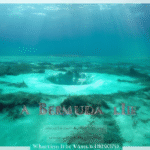What Secrets Lurk Beneath the Surface of Loch Ness: Is the Loch Ness Monster More Than a Myth?
What Secrets Lurk Beneath the Surface of Loch Ness: Is the Loch Ness Monster More Than a Myth?
The legend of the Loch Ness Monster, affectionately known as “Nessie,” has captivated the imagination of countless individuals for decades. This enigmatic creature, often described as a large, long-necked aquatic being, has sparked not only curiosity but also scientific inquiry into the nature of cryptids—creatures whose existence is unproven by mainstream science. Understanding the allure of Nessie and the mysteries surrounding her existence is essential to grasping the broader implications of cryptozoology. In this post, we will dissect the various facets of the Loch Ness mystery, from historical accounts to scientific investigations, while exploring the ongoing debate surrounding the creature’s existence.
A Brief History of the Loch Ness Monster
The Loch Ness Monster legend dates back to ancient times. The first recorded sighting occurred in the 6th century when Saint Columba purportedly encountered a “water beast” in the river Ness. Over the centuries, numerous reports of sightings have emerged, but the modern mythos began in the 1930s with the famous “Surgeon’s Photo.” This photograph, which allegedly captured Nessie’s silhouette, ignited a media frenzy and brought international attention to Loch Ness.
In the years that followed, many claimed to have seen the creature, each sighting describing different physical characteristics, which further complicated the narrative. While some witnesses described a large serpent-like figure, others reported a more dinosaur-like appearance. This inconsistency raises questions about the reliability of eyewitness accounts and the nature of the creature itself.
Core Concepts and Theories
Several theories have emerged regarding the Loch Ness Monster’s identity. Some suggest that Nessie could be a surviving plesiosaur, a marine reptile from the age of the dinosaurs. This theory, however, faces significant scientific scrutiny. Plesiosaurs are believed to have been air-breathing creatures, and the water temperature and depth of Loch Ness may not support such a large animal’s survival.
Other theories posit that Nessie is a large catfish or a misidentified otter. In 2018, researchers even suggested that the creature could be a large eel. The belief that Nessie is a product of folklore, combined with optical illusions or environmental factors, is also prevalent among skeptics.
Scientific Investigations and Evidence
Over the years, various scientific investigations have taken place to uncover the truth about Loch Ness. In 2003, a team of scientists conducted an extensive sonar survey of the loch, finding no evidence of large creatures. Their findings, however, did reveal a significant number of fish, including salmon and eels, which could contribute to some sightings.
In 2018, a more ambitious project took place: researchers utilized advanced DNA sampling techniques to analyze the water of Loch Ness. The findings suggested that the loch is teeming with life, yet no evidence of a large, unidentified creature was found. This aligns with the hypothesis that many sightings could be attributed to known species or environmental phenomena.
Alternative Perspectives: The Role of Folklore and Culture
Understanding the Loch Ness Monster cannot be divorced from its cultural context. Nessie embodies the human fascination with the unknown and reflects broader themes in mythology and folklore. Cryptids often serve as cultural touchstones, representing humanity’s desire to explore and explain the mysteries of nature.
In Scotland, Nessie has become a symbol of national pride, drawing tourists and researchers alike. The economic impact of the Loch Ness Monster, including tourism and merchandise, underscores the importance of folklore in sustaining local communities. As such, the belief in Nessie can be seen as a cultural phenomenon that transcends scientific validation.
Common Misconceptions and Clarifications
Many misconceptions surround the Loch Ness Monster, often stemming from sensational media portrayals. One prevalent myth is that the creature has been conclusively proven to exist or not exist. The truth is far more nuanced; while no definitive evidence supports Nessie’s existence, the absence of evidence does not equate to proof of non-existence.
Another misconception is that all reported sightings are hoaxes. While some have been debunked, others remain unexplained. This ambiguity is part of what makes cryptozoology a compelling field of study. Moreover, the psychological phenomena of pareidolia—where humans perceive familiar patterns, such as faces or figures, in random stimuli—can often lead to misinterpretations of natural formations or animals as Nessie.
Best Practices for Investigating Cryptids
If one is interested in investigating the Loch Ness Monster or other cryptids, several best practices can enhance the experience. First, approach the investigation with an open mind while remaining skeptical. Gathering firsthand accounts from witnesses can provide valuable insights; however, it is crucial to evaluate the credibility of sources and consider psychological factors influencing perceptions.
Utilizing technology can also aid in the investigation. Drones equipped with high-resolution cameras and sonar technology can cover vast areas and capture data that was previously unattainable. Participating in organized expeditions can provide access to resources and expertise, enriching the experience and contributing to ongoing research.
Future Developments and Ongoing Research
The future of Loch Ness research is likely to be shaped by advancements in technology. As genetic sampling and environmental DNA (eDNA) techniques continue to develop, researchers may uncover new insights into the loch’s ecosystem. Additionally, the increasing popularity of citizen science initiatives invites enthusiasts to contribute to ongoing studies, fostering a community dedicated to unraveling the mysteries of the loch.
Moreover, the role of social media in spreading information and engagement cannot be underestimated. As more individuals share their experiences and findings online, the discourse around Nessie and cryptozoology may evolve, potentially leading to new hypotheses and investigations.
The Intersection of Science and Mythology
The Loch Ness Monster serves as a fascinating intersection of science and mythology. While scientific investigations may not have provided conclusive evidence for Nessie’s existence, the cultural and psychological aspects of the legend remain compelling. The ambiguity surrounding the creature invites both believers and skeptics to engage in a dialogue about the nature of belief, evidence, and human curiosity.
Conclusion: The Enduring Mystery of the Loch Ness Monster
The question of whether the Loch Ness Monster exists continues to elude definitive answers. While scientific investigations have yet to uncover irrefutable evidence of Nessie, the creature’s cultural significance and the allure of the unknown ensure that the mystery endures. As we navigate the realms of folklore, science, and personal experience, the quest to understand the Loch Ness Monster remains a testament to humanity’s enduring fascination with the unexplained. Whether a figment of our imagination or a creature lurking in the depths, Nessie’s story captivates us all, reminding us that there is still much to discover in the world around us.
Other Articles
Recent Posts
- What Happened to Flight MH370? The Conspiracy Theories That Still Haunt Us
- What Secrets Lurk Within the Walls of the Infamous Trans-Allegheny Lunatic Asylum?
- What Evidence Supports the Existence of Bigfoot in the Pacific Northwest?
- What Happened to the Indus Valley Civilization? Unraveling the Mysteries of Ancient Urban Life
- Can Telepathy Be Scientifically Proven Through Laboratory Evidence?







